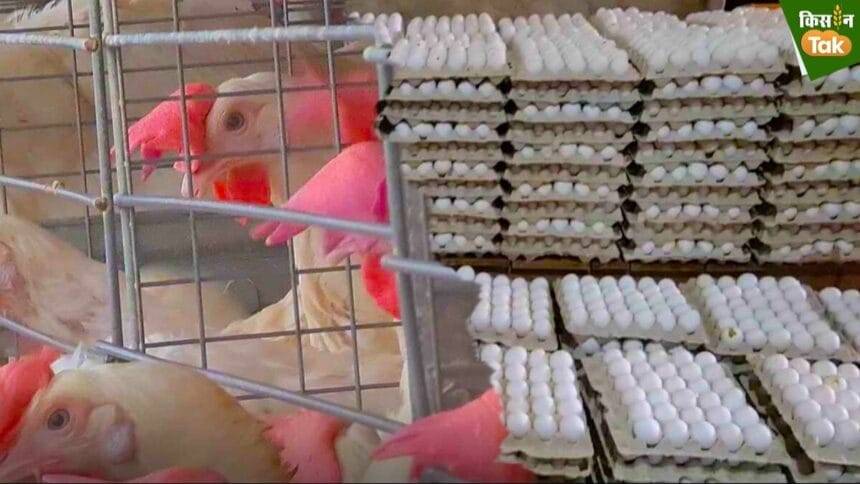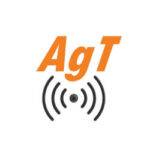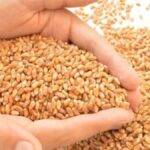Main Points In Hindi (मुख्य बातें – हिंदी में)
-
अंडों की कीमतों में उतार-चढ़ाव: पिछले डेढ़ साल से अंडों की कीमतों में लगातार उतार-चढ़ाव हो रहा है, जिसके कारण पोल्ट्री किसानों को अंडों पर केवल नाममात्र का लाभ हो रहा है।
-
NECC और बाजार में मूल्य अंतर: नेशनल एग कोऑर्डिनेशन कमेटी (NECC) द्वारा निर्धारित अंडों की दरें बाजार में बिकने वाली दरों से अलग हैं, जिससे किसानों को कोई लाभ नहीं मिल रहा।
-
पोल्ट्री फीड की कीमतें: पोल्ट्री फीड की कीमत में पिछले एक साल में 23 रुपये से बढ़कर 28 रुपये प्रति किलोग्राम हो गई है, जबकि इसके लिए न्यूनतम समर्थन मूल्य (MSP) तय किया गया है, लेकिन अंडों की दरें नहीं तय की गई हैं।
-
उच्च बिजली की लागत: पोल्ट्री फार्मों की उच्च ऊर्जा खपत (गर्मी और सर्दी दोनों मौसम में) के कारण, यदि राज्य सरकार कृषि नियमों के तहत बिजली की दरें तय करे तो इससे किसानों को राहत मिल सकती है।
- औषधियों की बढ़ती कीमतें: पोल्ट्री फीड के साथ-साथ चिकन के लिए आवश्यक औषधियों की कीमतें भी बढ़ गई हैं, जो किसानों के लिए एक महत्वपूर्ण चिंता का विषय है।
Main Points In English(मुख्य बातें – अंग्रेज़ी में)
-
Fluctuating Egg Prices: The egg market has experienced instability over the past 18 months, leading to nominal profits for poultry farmers, who often find that market prices differ from those set by the National Egg Coordination Committee (NECC).
-
Impact of Poultry Feed Costs: The primary factor contributing to the instability in egg prices is the rising cost of poultry feed, which has increased from Rs 23 to Rs 28 per kg over the past year. While there is a Minimum Support Price (MSP) for certain grains, market prices frequently exceed these rates, and feed prices continue to rise.
-
Lack of Support from Authorities: Both the NECC and state governments have not provided effective support to farmers regarding stable egg prices. Farmers feel disadvantaged by the difference between government-set rates and market prices.
-
Increased Operational Costs: In addition to feed, the cost of medicines for chickens has increased, adding financial strain to poultry farming.
- Electricity Cost Relief Suggestions: Poultry experts suggest that adopting agricultural pricing rules for electricity could alleviate some of the high operational costs faced by poultry farms, particularly due to their high energy consumption for heating and cooling.
Complete News In Hindi(पूरी खबर – हिंदी में)


पोल्ट्री विशेषज्ञों के अनुसार, पिछले डेढ़ साल में अंडों के दामों में उतार-चढ़ाव आया है। हालांकि यह पोल्ट्री बाजार में लगातार होता रहता है, लेकिन अंडों के दाम कुछ समय से स्थिर नहीं हैं। जिसके कारण पोल्ट्री किसान को अंडों पर केवल nominal लाभ हो रहा है। अगर हम राष्ट्रीय अंडा समन्वय समिति (NECC) की बात करें, तो किसानों को इससे भी कोई फायदा नहीं मिल रहा है। NECC अंडों के दाम अलग तरीके से तय करता है, जबकि बाजार में अंडे खरीदे और बेचे जाते हैं एक अलग दर पर।
पोल्ट्री विशेषज्ञों का कहना है कि इसके पीछे सबसे बड़ा कारण पोल्ट्री फीड है। सरकार ने मुर्गियों के लिए दिए जाने वाले फीड का न्यूनतम समर्थन मूल्य (MSP) तय किया है, लेकिन अंडों के दाम नहीं तय किए गए हैं। NECC के दरें भी मददगार साबित नहीं हो रही हैं। राज्य सरकार भी दामों के मामले में कोई सहायता नहीं कर रही है।
इसके अलावा पढ़ें – PT Bull: यह बैल भैंसों का विकी डोनर है, इसका वीर्य अनुसंधान में उपयोग किया जाता है, जानिए इसकी विशेषताएँ।
चिकन फीड की कीमत एक साल में 23 से 28 रुपये प्रति किलो हुई
पोल्ट्री किसान राहुल सिंह ने बताया कि यदि हम एक साल पहले की बात करें, तो चिकन फीड आसानी से 23 रुपये प्रति किलो मिल जाता था। अगर आप बड़ी मात्रा में खरीदते हैं, तो थोड़ा और लाभ हो जाता था। लेकिन पिछले एक वर्ष में, फीड की कीमत 23 से 28 रुपये प्रति किलो बढ़ गई है। इस भी बाजार के आधार पर दाम एक या दो रुपये और बढ़ते हैं। ऐसी स्थिति में, बाजरे, सोयाबीन और मक्का के फीड का न्यूनतम समर्थन मूल्य तय है। इसका मतलब है कि इन तीन अनाजों की कीमत इस दर से कम नहीं होगी। लेकिन अगर बाजार में तेजी है, तो ये तीन अनाज MSP दर से भी ज्यादा मिलते हैं। इसके अलावा, मुर्गियों के लिए दवाइयों की कीमत भी बढ़ गई है।
यदि बिजली की कीमतें कृषि के आधार पर तय की जाएं तो राहत मिलेगी
पोल्ट्री विशेषज्ञ नवाब अकबर अली का कहना है कि चाहे गर्मी हो या सर्दी, पोल्ट्री फार्म पर बहुत अधिक बिजली की खपत होती है। सर्दी में, ब्रोडर गर्मी प्रदान करने के लिए बहुत अधिक बिजली खाता है। वहीं गर्मी में, बड़े कूलर चलाए जाते हैं। क्योंकि मुर्गियों के लिए तापमान को 23 से 24 डिग्री पर बनाए रखना होता है। यदि राज्य सरकार पोल्ट्री के लिए बिजली प्रदान करने में कृषि के नियमों को अपनाए, तो यह एक बड़ी राहत होगी।
इसके अलावा पढ़ें: पोल्ट्री अंडा: एक वर्ष में 440 करोड़ अंडों का उत्पादन बढ़ा, स्थानीय और बत्तख के अंडों की भी मांग बढ़ी।
Complete News In English(पूरी खबर – अंग्रेज़ी में)
According to poultry experts, there has been fluctuation in the rates of eggs for the last one and a half years. Although this happens continuously in the poultry market, the prices of eggs have not been stable for some time. Due to which the poultry farmer earns only nominal profit on eggs. If we talk about National Egg Coordination Committee (NECC), farmers are not getting any benefit from it either. NECC decides the rates of eggs at a different rate whereas in the markets eggs are bought and sold at a different rate.
Poultry experts say that the biggest reason behind this is poultry feed. The government has fixed the MSP for the feed fed to chickens, but the rates for eggs are not fixed. NECC rates are also not proving helpful. The state government is also not providing any help in the matter of rates.
Also read- PT Bull: This bull is the Vicky donor of buffaloes, semen is used in research, read its features.
Chicken feed increased from Rs 23 to Rs 28 per kg in a year
Poultry farmer Rahul Singh told even the farmers that if we talk about a year ago, chicken feed was easily available for Rs 23 per kg. If you buy in large quantities, you get a little more profit. But in the last one year, the price of feed has come down to Rs 23 to Rs 28 per kg. In that also the rates increase by one or two rupees depending on the market. In such a situation, the minimum support price (MSP) of millet, soybean and maize fed to chickens is fixed. This means that at less than this, these three grains will not be available for the chickens. On the contrary, if the market is bullish then these three grains are available even above the MSP rate. Not only this, medicines for chickens have also become expensive.
Get relief if electricity prices are fixed on the basis of agriculture
Poultry expert Nawab Akbar Ali says that whether it is summer or winter, poultry farms consume a lot of electricity. In winter, the brooder consumes a lot of heat to provide heat. Whereas in summer, big coolers are run. Because the temperature has to be maintained at 23 to 24 degrees for chickens. It will be a big relief if the state government adopts agricultural rules in providing electricity to poultry.
Also read: Poultry Egg: 440 crore eggs increased in one year, demand for local and duck eggs also increased








